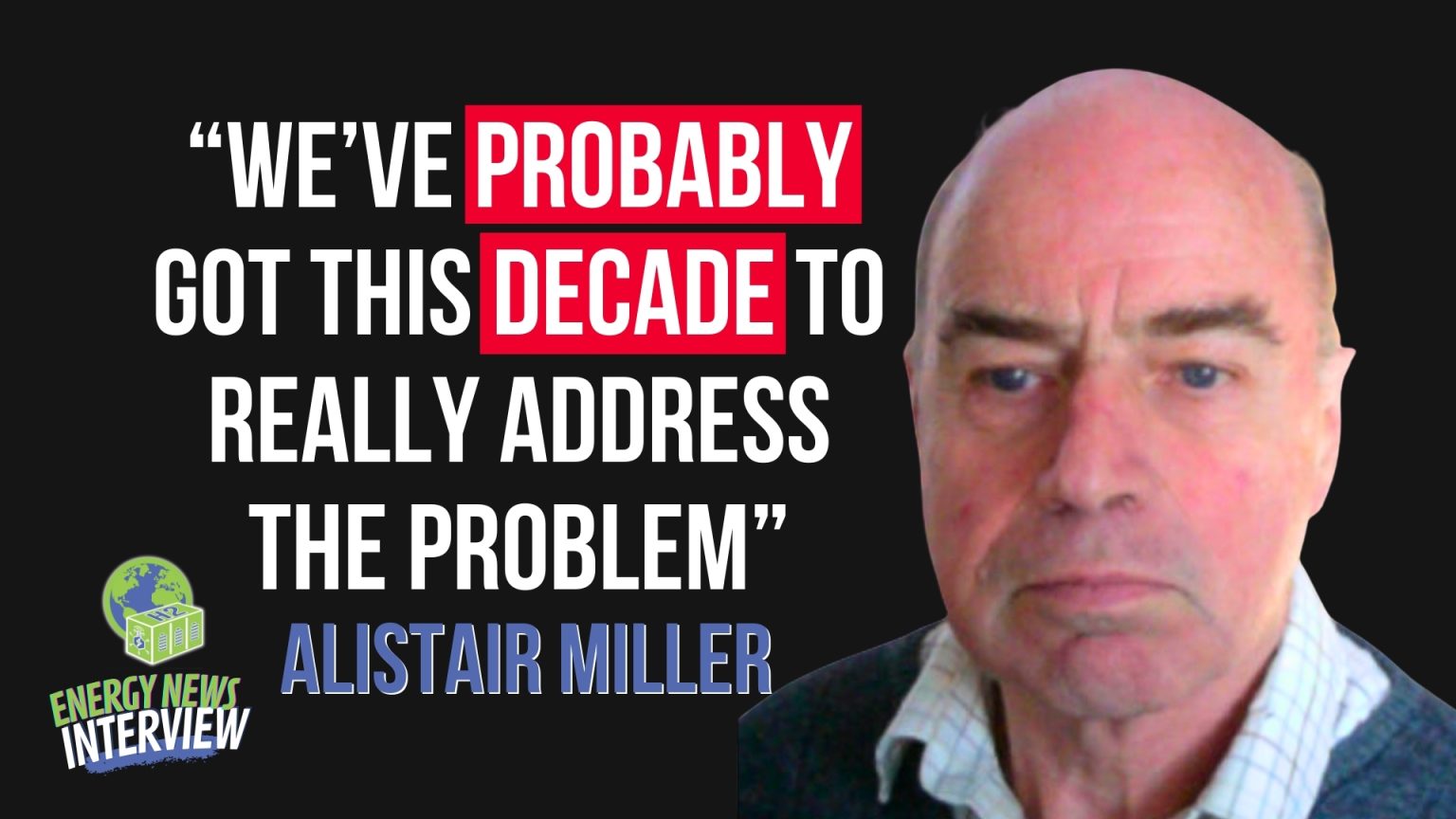Global temperatures have surged past 1.5°C above pre-industrial levels, yet carbon emissions continue to rise at 1.1% annually, defying net-zero pledges. Against this backdrop, nuclear energy—responsible for 10% of global electricity and 25% of low-carbon power—faces a paradox: its potential as a climate solution clashes with entrenched policy short-termism and public skepticism. Dr. Alistair Miller, a 60-year veteran of nuclear research, dissects these challenges with unflinching pragmatism.
WATCH THE FULL INTERVIEW
The Cost of Short-Termism in Energy Policy
Miller’s critique of institutional myopia is sharp: “The reluctance to address humanity’s crucial problems has never been worse.” While uranium-fueled reactors dominate today’s nuclear landscape—providing 60% of Ontario’s electricity at $0.076/kWh, among North America’s lowest rates, the focus on “cheap and nasty” solutions neglects long-term sustainability. Canada’s CANDU reactors, for instance, use unenriched uranium and heavy water, but their 30-year refurbishment cycles demand upfront investment, a hurdle for policymakers prioritizing immediate costs.
This short-termism extends to waste management. Deep geological repositories, validated by decade-long Canadian experiments, remain stalled by political inertia. Meanwhile, 90,000 metric tons of spent fuel sit in interim storage globally, a figure projected to double by 2040.
SMRs: Promise vs. Practicality
Small modular reactors (SMRs) epitomize nuclear’s potential and pitfalls. Designs like Terrapower’s “traveling wave” reactor, which operates for 20 years without refueling, could decarbonize remote regions reliant on diesel (costing $0.30–$0.60/kWh in Canada’s Arctic). Yet cost overruns plague the sector: NuScale’s Utah project collapsed after prices ballooned to $89/MWh, far above renewables. Miller acknowledges SMRs’ niche viability but warns against viewing them as a panacea: “Most designs won’t prove practical.”
Synergy Over Competition: Nuclear and Renewables
The false dichotomy between nuclear and renewables obscures their complementary roles. Miller’s pioneering “New Wind” model demonstrates how Ontario’s nuclear baseload, paired with hydrogen production during off-peak hours, could integrate 20% wind capacity while lowering system costs. Hydrogen, he notes, is pivotal for hard-to-electrify sectors: Canadian Pacific Railway’s hydrogen-powered locomotives already cut emissions by 30% compared to diesel.
Yet renewables’ intermittency remains a structural barrier. Wind generates 2.5x more power in Ontario’s winters than summers, a gap batteries alone can’t bridge. Nuclear’s 93% capacity factor offers grid stability as demand surges—Ontario projects a 60% increase by 2050.
The Public Trust Deficit
Public fear persists, rooted in outdated radiation risk models. The linear no-threshold (LNT) hypothesis, which assumes any radiation exposure is harmful, remains entrenched despite mounting evidence of its flaws. Natural background radiation (2.4 mSv/year) dwarfs doses from nuclear plants (0.01 mSv/year), yet 62% of Canadians still associate reactors with danger.
Miller attributes this to decades of poor communication: “We let groups like Greenpeace frame radiation as uncertain rather than understood.” Initiatives like the Deep River Science Academy, which immersed students in nuclear R&D, show education’s impact—1,000+ alumni now advocate for evidence-based discourse.
Gen IV Reactors and the Fuel Cycle Dilemma
Fourth-generation reactors, capable of recycling spent fuel, face economic, not technical barriers. Reprocessing remains costly ($2,000/kg vs. $130/kg for fresh uranium), but closed fuel cycles could reduce waste volumes by 90%. Meanwhile, Canada’s vast uranium reserves (≈1 million years’ supply at current use) lessen urgency, yet Miller stresses planning for “decades beyond 2050.”
Geoengineering and Ocean Acidification: A Silent Crisis
Beyond energy, Miller highlights underappreciated climate threats. Oceans absorb 30% of CO2 emissions, driving acidification that dissolves calcium carbonate shells, key to marine food webs. Iron fertilization trials, which boost phytoplankton CO2 uptake, face opposition from environmentalists, delaying critical research. “We’re altering ecosystems irreversibly,” he warns, “while fixating on visible symptoms like temperature.”
The Path Forward
Miller’s “magic wand” fix? Dispel the LNT myth to unlock nuclear’s scalability. With atmospheric CO2 at 425 ppm—50% above pre-industrial levels—the stakes demand systemic thinking. Ontario’s nuclear refurbishments, set to extend plant lifespans by 30 years, exemplify the balance of pragmatism and foresight.
In an era of drill-baby-drill rhetoric and clean energy platitudes, Miller’s message is clear: Climate solutions require confronting uncomfortable truths, not chasing shortcuts.





